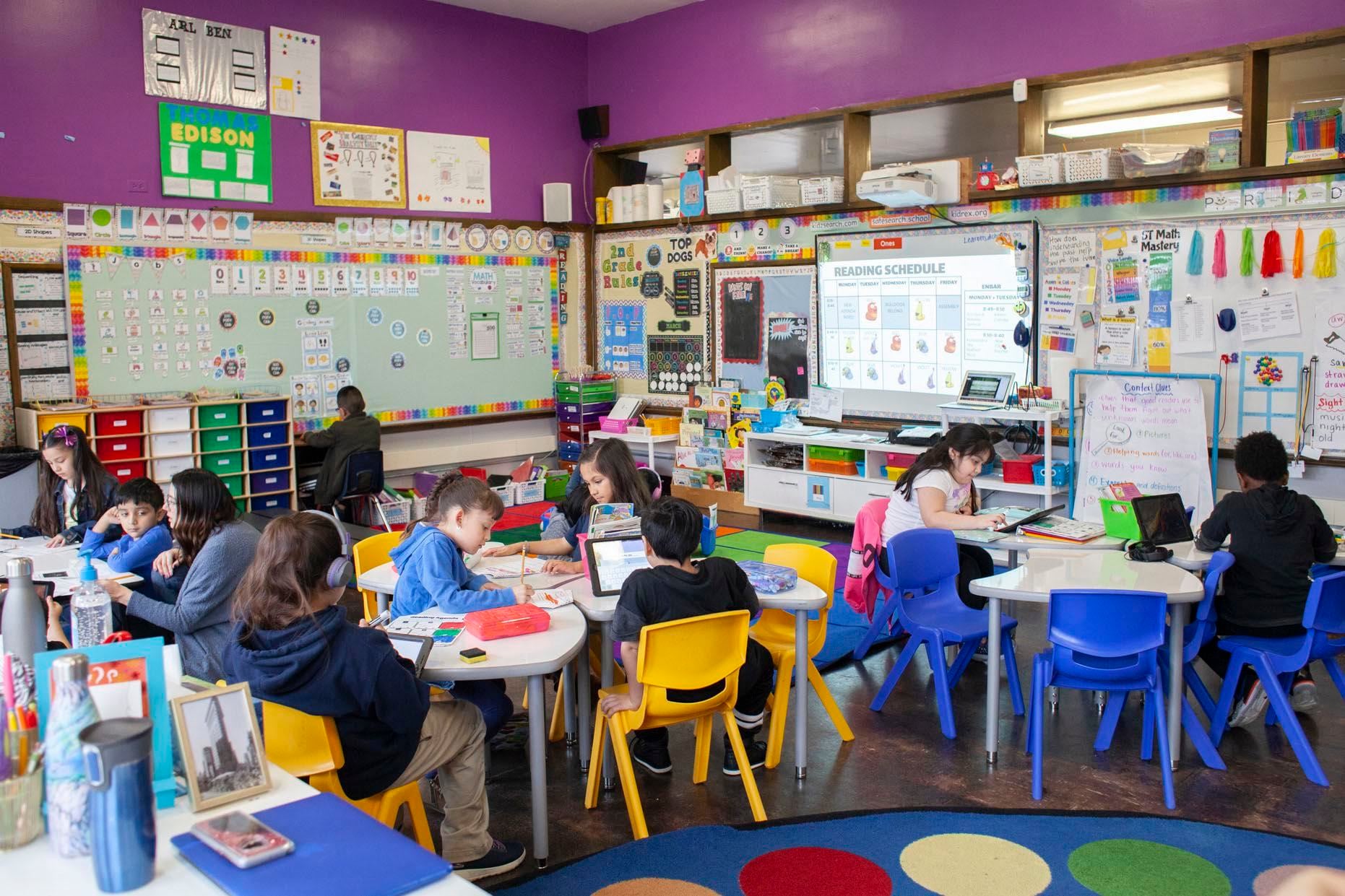Sign up for Chalkbeat Chicago’s free daily newsletter to keep up with the latest education news.
New data released today show Illinois students continue to rebound from pandemic-era academic setbacks in most metrics, but SAT scores continue to drop.
Declining SAT scores mirror a national trend but come as more Illinois students are graduating from public high schools, raising red flags for top state education officials.
The Illinois State Board of Education’s latest report card data show the four-year high school graduation rate at 87.7% at the end of the 2023-24 school year, compared to 87.6% the previous year, and it has been steadily climbing over the past decade. However, graduation rates for Black and Latino students are still low compared with white and Asian American students.
About 31.1% of high school juniors who took the SAT this past spring were considered proficient in reading, while 26.1% met or exceeded state standards in math. That’s a drop from 2018-19 when 36.2% were proficient in reading and 34.4% were proficient in math.
Average SAT composite scores stood at 950.3 this spring, down from 960.9 last year and 994.5 in the 2018-19 school year.
State Superintendent Tony Sanders noted that Illinois’ accountability system put more weight on graduation rates starting last year.
“Schools have really focused on improving graduation rates for all students, and that has yielded some significant results,” he said. “How can we have these amazing gains in the graduation rate with simultaneously declining proficiency rates in high school?
Sanders, along with state education officials, said in a press conference last week that the state is working on an indicator of individual growth for students between ninth to 11th grade. The indicator won’t be a part of the state’s accountability system for school districts and schools, but it will be provided to high schools to help them understand where students are each year.
The report card provides insight into how Illinois’ 850-plus school districts are performing. The massive data set includes information on hundreds of metrics such as test scores, enrollment data, chronic absenteeism, high school graduation rates, student participation in career and technical education programs, enrollment in advanced classes, and teacher retention rates.
Even though the COVID-19 pandemic continues to impact students’ academic progress across the state, there are signs that show Illinois students have regained ground in some metrics. Third through eighth grade students are making progress on state standardized tests in reading and math, more students are taking advanced classes in high school, participation in career and technical education courses has increased, and the number of educators in the state has increased since the school year 2017-18.
Post-pandemic, Illinois schools spent almost $7 billion dollars on high-impact tutoring and staffing increases. Those funds dried up at the end of September.
Here are some more 2024 report card highlights.
Elementary students see pre-pandemic numbers in reading, but not math
Students in third to eighth grade who took the Illinois Assessment of Readiness, also known as the IAR, in the spring of 2024 saw improvements in reading and math overall. In reading, 41.2% of students met or exceeded the standards. That is 5.8 percentage points higher than in spring 2023 and 3.4 percentage points higher than in 2019.
Sanders attributed the improvement in reading to best practices for instruction, curriculum, and teacher professional development. He also mentioned the state’s comprehensive literacy plan.
Students are struggling to reach pre-pandemic levels in math, however. About 28.4% of students were proficient in math in 2024, about 3.4 percentage points lower than in 2019 and only 1.4 percentage points up from 2023.
Sanders said the state is working on a statewide math and numeracy plan to support students and increase proficiency.
Racial disparities continue to persist. White and Asian American students continue to have higher math and reading proficiency rates on the IAR when compared to other student groups. About 52.2% of white students were proficient in reading and 38.7% in math, while Asian American students were 68.2% proficient in reading and 61.3% in math.
Black and Latino students have seen a slight uptick in scores since the school year 2018-19, but scores on the IAR still lag behind white and Asian American students, and often students are scoring lower than the state’s average. About 28.6% of Latino students and 21.8% of Black students were proficient in reading, while 15.6% of Latino students and 9.1% of Black students were proficient in math.
Earlier this month, Chicago Public Schools reported that about 30.5% of third through eighth graders were proficient in reading on the Illinois Assessment of Readiness 2024 spring exam, and 18.3% met or exceeded the standard in math.
English learners enrollment continues to climb
About 1.8 million students were enrolled in Illinois public schools during the 2023-24 school year, the same as school year 2022-23. In a call with news reporters, Sanders said that overall declines in enrollment started in 2015 and match the country’s declining birth rate.
However, Illinois continues to see an increase in English learners. In school year 2023-24, English learners made up 16.4% of total enrollment, a 1.8 percentage point increase compared to the school year 2022-23, when enrollment was at 14.6%. Sanders attributed the rise in newcomer students to families escaping conflicts around the globe.
Overall student demographics are shifting too, with increasing enrollment among Asian American, Latino, and multiracial students and declines in the number of white and Black students enrolling in public schools
Absenteeism is down but higher among kindergarteners and high school students
When students miss 10% of the school year — about 18-20 school days — with or without an excuse, they are considered chronically absent. The percentage of students who missed this much school spiked during the COVID pandemic.
But the numbers have come back down. About 26.3% of all students were chronically absent during the school year 2023-24, down from the 28.3% from last year. Illinois saw its highest chronic absenteeism rate of 29.9% in 2021-22, when more students were required to go back to school in person.
This year, the Illinois State Board of Education decided to look at the intersection between chronic absenteeism and grade levels and found kindergarten and high school students were the most likely to be chronically absent.
Samantha Smylie is the state education reporter for Chalkbeat Chicago covering school districts across the state, legislation, special education and the state board of education. Contact Samantha at ssmylie@chalkbeat.org.






